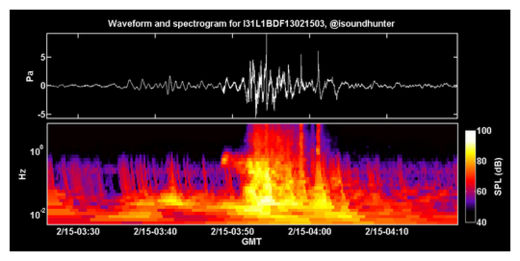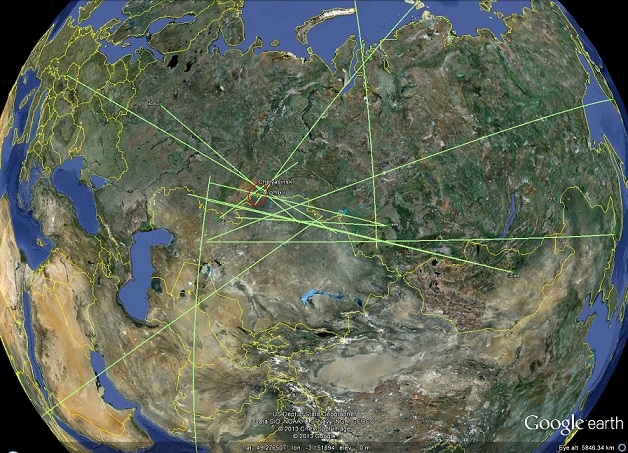
Up to 11 sensors in Greenland, Africa, Russia's Kamchatka Peninsula and other far-flung regions detected the Russian meteor blast's infrasound, or low-frequency sound waves. The sensors are part of the global network of 60 infrasound stations maintained by the Comprehensive Nuclear Test Ban Treaty Organization (CTBTO).
Infrasound's long wavelengths (about 20 to 0.01 Hertz) can travel far distances in the atmosphere, at frequencies humans can't hear. Elephants, whales and even pigeons use infrasound for communication and navigation, scientists have discovered.
The CTBTO relies on Infrasound arrays to help determine the location and size of atmospheric explosions. Man-made explosions, such as bombs, produce a different infrasound pattern than natural fireballs like shattering meteors.

That's about 20 to 25 times more powerful than the atomic bombs dropped in World War II, but still smaller than Siberia's Tunguska meteor explosion in 1908, which released 10 to 15 megatons of energy (equivalent to the Castle Bravo device, the most powerful atomic bomb tested by the United States).
"This was a moderate explosion," said Paul Chodas, research scientist in the Near Earth Object Program Office at the Jet Propulsion Laboratory in Pasadena, Calif.



I was taken aback by Paul Chodas's comment on the Russian fireball, “This was a moderate explosion.”
What? 300 kilotons of TNT is a moderate explosion?
Well, when you compare it to Tunguska, yeah, but when was the last time CTBTO infrasound stations got something closely comparable to the 300 kilotons of TNT?
The data coming from the Fireball Logs of the American Meteor Society seems to be the best data we (meaning you and me) have confirming the increase of incoming fireballs. Unfortunately, the AMS data relies on reports to be sent in and apparently anyone can send in a report. If there were only so many designated observers each watching the night sky for fixed amount of time each night, then this would be statistically valuable data. However, the increase in number of the fireball logs at AMS could be attributed to the activity of reporting becoming more common or more amateur astronomers out there watching. For example, I would never have reported a fireball a year ago because I've never heard of AMS. Now I might.
The detection of nuclear detonation using a natural sound channel in the upper atmosphere goes back to about 1947 with Project Mogul which used microphones in high altitude balloons. ( Project Mogul was also used to explain the captured “Flying Saucer” at Roswell for those of you who this may sound familiar. ) It is not generally known, but the temperature of the atmosphere both ABOVE and below 15 km is warmer, making 15 km the level of the sound channel as sound is reflected off of warmer air masses. The ocean has a similar sound channel about 1 km below the ocean surface, which is how whales communicate across vast distances.
The collection of data that the CTBTO has on incoming meteors could very well be dazzling. They are not relying on reports from anyone willy-nilly, but they can detect and locate EVERY incoming meteor, day or night, over land or sea, that exceeds a certain threshold of energy and CTBTO also can assign an energy of impact for each meteor. And they have had the potential to do this for decades.
I can't imagine CTBTO (or someone else) not doing this. I for one, would love to see what that data looks like.
So, maybe when Paul Chodas says, “This was a moderate explosion,” maybe he knows something that we don't.